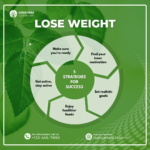The study was published in the scientific journal Nature Medicine.
While participants on both diets experienced similar amounts of weight loss, those who fasted for three days during the week, only eating between 8am and 12pm on those days, showed a greater tolerance to glucose after six months than those on a daily, low-calorie diet, according to senior author, Professor Leonie Heilbronn from the University of Adelaide.

“Participants who followed the intermittent fasting diet were more sensitive to insulin and also experienced a greater reduction in blood lipids than those on the low-calorie diet,” she added.
Type 2 diabetes occurs when cells in the body’s muscles, fat and liver become resistant to insulin, resulting in insufficient uptake of glucose from the bloodstream and an increase in blood glucose levels, says dietitian Mia Holm, manager of the Lifestyle Management Centre at Hong Kong Adventist Hospital.

While the differences between the two Australian study groups were lost after 18 months, the study sheds light on the benefits of a new dietary interventional approach, says Professor Alice Kong from the department of medicine and therapeutics at Chinese University of Hong Kong.

If you want to try IF, Holm says it is easier to start with a 12:12 fasting-eating pattern – fasting for 12 hours and eating for 12 hours. Once you are comfortable with this schedule, you may gradually increase it to 14:10 and then 16:8.
“According to various studies, skipping dinner is better than skipping breakfast, since eating breakfast supports a healthy circadian rhythm,” she adds.
“For those looking to align with their circadian rhythms, eating between 8am and 6pm might be the ideal schedule. If skipping dinner is not possible, I recommend consuming the majority of your calories during the day, having a lighter dinner and eating at least three to four hours before bedtime.”

She warns that IF is not suitable for children, teenagers, pregnant or breastfeeding women, and individuals who are physically fragile or have nutritional deficiencies.
IF is not a licence to consume unhealthy foods, such as sugar- and fat-laden cakes and pastries, soft drinks, deep-fried products that are high in saturated fat and salt, and ultra-processed or junk foods that offer zero nutrients. To reap the health benefits of IF, you should make wholesome food choices.

Studies have shown that people who consume high amounts of saturated fat – commonly found in meat – and animal fats have twice the risk of developing diabetes compared to those who consume lower amounts, Holm notes.
For managing type 2 diabetes both the American Diabetic Association and its Canadian counterpart advocate having a whole food, plant-based diet. Made up of whole grains (such as brown rice and oats), green leafy vegetables, fruit, legumes, beans, seeds and nuts, this diet is rich in fibre and low in unhealthy fats, salt and sugar.
Holm says that hunger pangs should subside after 30 minutes if you feel hungry during the fasting period. Drinking zero-calorie fluids such as water or plain tea can help quell your hunger.
She adds that this is why it is crucial to eat adequately and nutritiously during the feeding period, particularly if you are physically active. Because they are high in fibre and nutrients, plant-based foods will satisfy you more than refined and processed ones.
This content was originally published here.


















